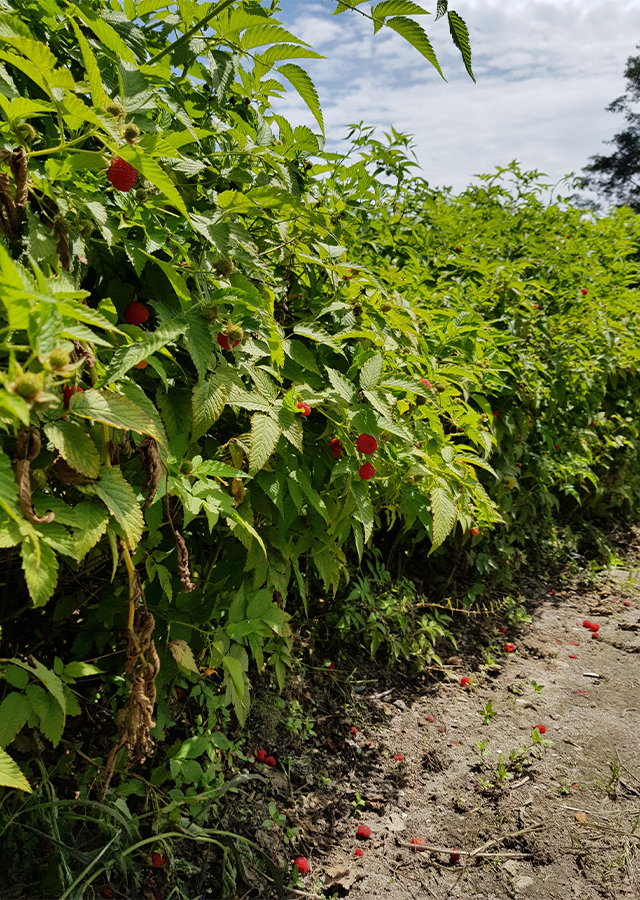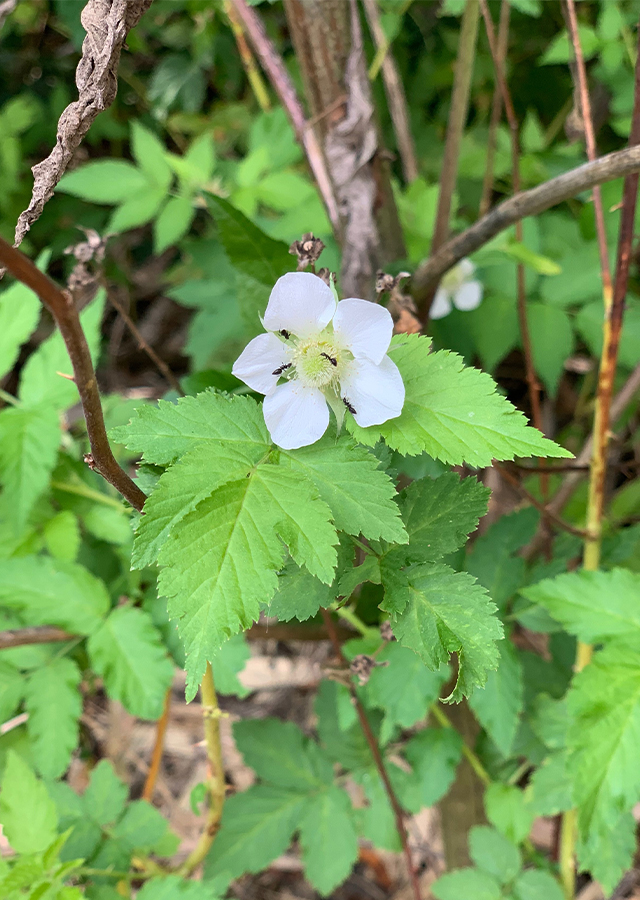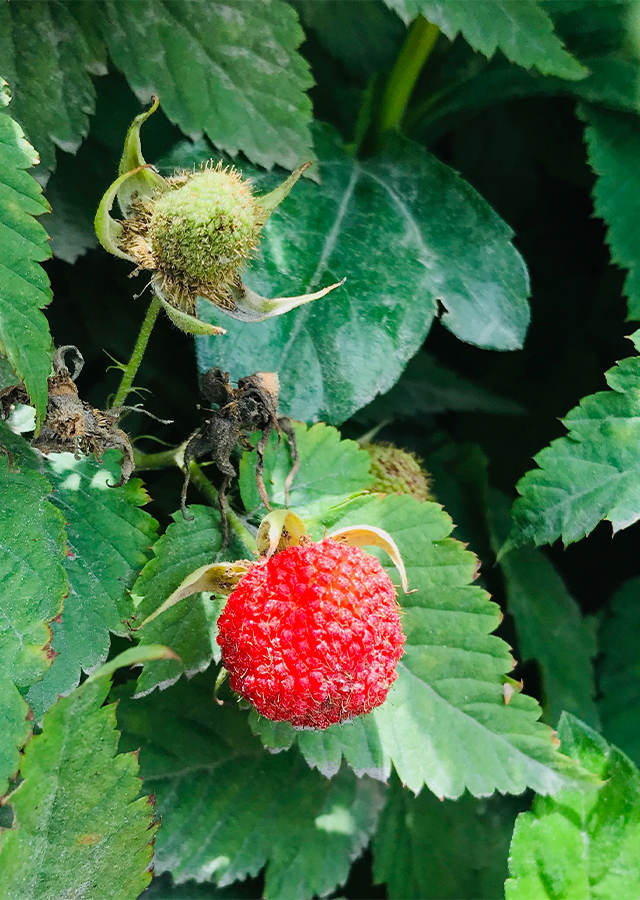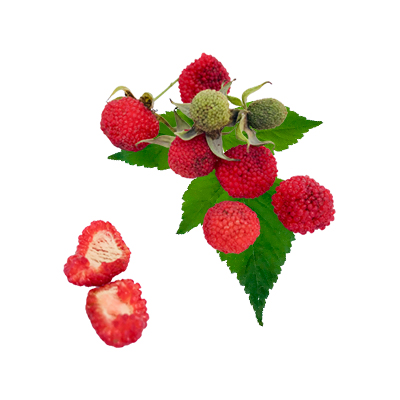Roseleaf Raspberry
Rubus rosifolius Sm.
Rosaceae
Location in our garden
Principal



Synonym
Rubus apoensis Elmer
Rubus chinensis Ser.
Rubus comintanus Blanco
Habitus
Herbaceous. An evergreen erect or spreading shrub, perennial, 1–3 m m tall, stems soft-hairy, glabrescent, with usually rather few curved to straight prickles.
Part Used
Leaves
Fruit
Roots
Twigs
Growing Requirements
Full Sunshine
Need Shade
Habitat
Mountains
Overview
R. rosifolius occurs naturally in India, Indo-China, Taiwan, the Philippines, Borneo, Indonesia (except Sumatra), Papua New Guinea and Australia. It is cultivated as an ornamental or for its fruit and naturalized throughout the tropics and warm temperate regions.
Vernacular Names
Beberetan (Indonesia), Amora-vermelha (Brazil), Kong xin pao (Chinese), Framboise(French), Kibo-lepum (India), Sagmit (Philippines), Fresa (Spanish), Ngáy hong(Vietnamese).
Agroecology
R. rosifolius is found on various soils in open places such as clearings, forest edges, secondary forest and thickets, from sea-level up to 2000(-3000) m altitude. Garden forms exist with more than 5 petals in the flower, which resemble a small rose. They are usually called var. coronarius Sims. These plants may produce fruits and sometimes escape from cultivation.
Morphology
- Branchlets - greyish brown or dark reddish brown, terete, soft hairy or subglabrous, withstraight to curved prickles and yellowish glands.
- Leaves - alternate, compound or simple;petiole present; stipules free. Inflorescenceterminal, mostly paniculate, at the end ofaxillary leafy branches of determinate growth.
- Flowers - 5-merous, mostly bisexual; sepalsfree, persistent; petals free, usually white; stamens many, ovaries many on a mostly elevated torus.
- Fruits - ovoid to globose or ellipsoid, up to 2.5 cm across, red, becoming loose from the torus as a whole, cohering and falling as a collective fruit,either together with the dried torus (blackberry-like) or without and hollow (raspberry-like).
- Seeds - with a thin testa.
Cultivation
- Rubus vegetative propagation by root suckers(stolons).
- Storing seeds requires one month of stratification at around 33 °C for seeds and is best sown in the growing season as early as possible.
Chemical Constituents
- Anthocyanin, cyanidin-3-glucoside, pelargonidin-3-rutinoside, titratable acidity.
- Study of crude extract of fruit yielded secondary metabolites viz. phenoliccompounds, alkaloids, steroids, and higher alcohols.
Traditional Medicinal Uses
- The leaves are anodyne, astringent, depurative, and expectorant, as wellas the roots.
- The fruit and leaves are considered astringent.
- Studies have indicated anti-tumor, anti-inflammatory, analgesic,antioxidant, antimicrobial, anti-quorum sensing properties.
- With other ingredients for intestinal disorders, the roots are chewed inIndonesia. It is said that fresh leaves chewed with roasted coconut cure the thrush.
- In the Philippines, a decoction of the roots is given as an expectorant and the fruit syrup as a demulcent.
- The decoction of the leaves was used as a common diarrhea remedy byAboriginal people in Australia.
- For treating diarrhea, a decoction of the root is used.
- The leaves are added to the itches externally.
- In the treatment of fevers, a decoction of leafy stems is used.
- Fruit syrup is used to demulcate the fruit.
- In Papua New Guinea, the leaves are externally applied to itches.
- In Indonesia, the leaves enter into various traditional prescriptions apparently for their astringent properties
Part Used
Reference Sources
- de Padua, L.S., Bunyapraphatsara, N. and Lemmens, R.H.M.J. (Editors), 1999. Plant Resources of South-East Asia No 12(1). Medicinal and poisonous plants 1. Backhuys Publishers, Leiden, the Netherlands. 711 pp.
- Holdsworth, D.K., 1977. Medicinal plants of Papua New Guinea. Technical Paper No 175. South Pacific Commission, Noumea, New Caledonia. 123 pp.
- Verheij, E.W.M. and Coronel, R.E. 1999. Plant Resources of South-East Asia No 2: Edible fruits and nuts. PROSEA Foundation, Bogor, Indonesia. pp. 98-100



